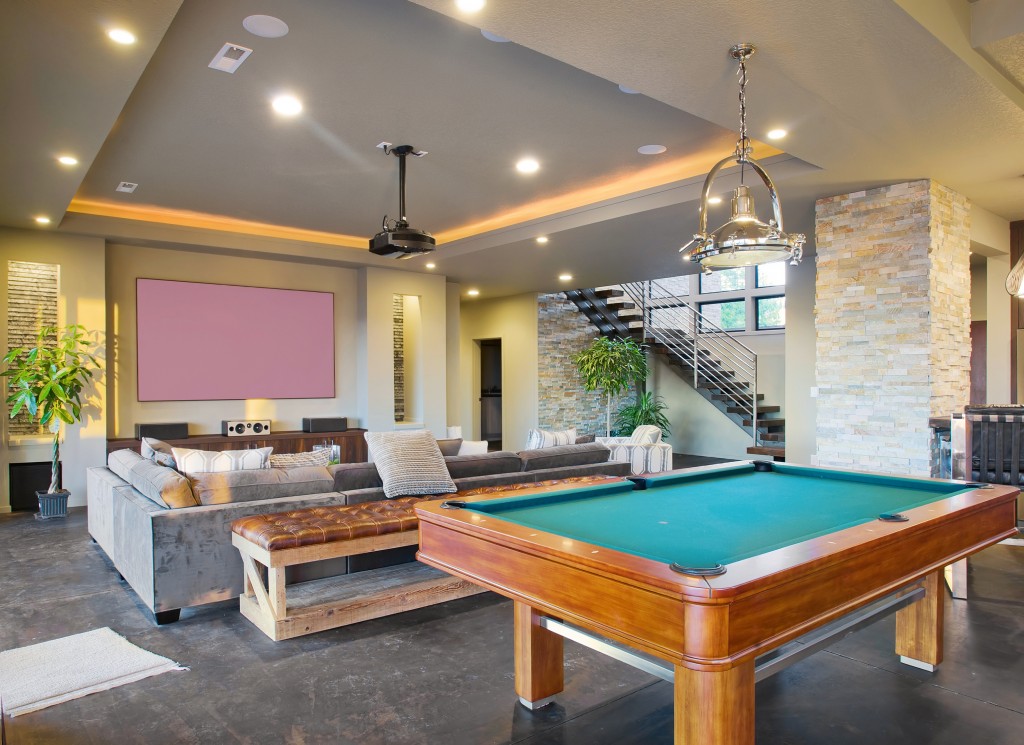Today’s basements are no longer just used for long-term food storage, which was the original purpose of the underground space. Though there may still be some homeowners who keep their liquors in their basements, chances are they’re also finding an additional purpose for the space other than being a wine cellar. And true enough, living and entertainment areas situated in basements are now getting popular.
Transforming your basement into fully-functional living space may take a lot of work, especially if yours isn’t equipped with insulation, plumbing, and electrical lines. Your flooring, ceiling, and lighting may also need an overhaul.
This guide will walk you through the steps to improve your basement:
1. Consult Local Building Codes
Before starting with your project, consult your local building codes to ensure that the size of the space will pass the requirements, which is a height of at least 7 feet.
2. Install Plumbing and Wiring
After confirming that your basement can be a livable space, start with the plumbing and electrical works. Build a bathroom in there as well to make it extra convenient.
3. Add Insulation
Basements can have freezing temperatures in cool seasons; hence, insulation is crucial. It also reduces the echo in the space.
4. Protect Against Moisture
To add moisture protection to your basement, you need a vapor barrier and a moisture-resistant flooring material. This means ruling out hardwood floors, as those expand and contract from changing temperatures and moisture levels.
Consider sheet vinyl, which comes in either sheet or tile/plank form. It’s inexpensive, warm, and easy to install. Ceramic or porcelain also work great, as both are durable, long-lasting, and inexpensive. But if you’re seeking a more luxurious look, engineered wood will serve that for you, albeit at a high price, so opt for luxury vinyl if your budget is limited.
If you’re turning your basement into a home theater, and flooding isn’t a problem in your area, wall-to-wall carpeting should be a viable material for the space. It’s also pricey, but highly luxurious, warm, and it offers the best sound quality improvement.
5. Build an Egress Window
Besides serving as an emergency exit, an egress window also adds natural light to the space. As you work on that, consider expanding your window well, too, to maximize the natural light entering. But most importantly, don’t forget to install a durable steel window well cover on it. The cover is a necessity as it protects your window well from deteriorating due to the elements, drainage, dirt, and human contact.
Dirty, uncovered window wells may encourage termite infestation, which can reach the interiors of your basement and produce a chain reaction of rot and water damage.
6. Design Your Dream Living or Entertainment Space

Basements have a lot of potentials, from the bedroom to the home office, living area to a man cave, home theater to a bar, and etc.
Coziness is important in the basement. Use extra plush couches and accent chairs, a soft area rug, lots of throw pillows, and warm lighting from floor or desk lamps. If you’re adding a playroom to the space for your kids, paint and decorate it with fun colors to invoke excitement.
You can also make a laundry room in your basement. Just conceal your washers in cabinets, so that they won’t be an eyesore when you’re entertaining.
Whatever haven has your basement transformed into, be sure to maintain it diligently, as the underground place will still be more vulnerable than the rest of your house. Regularly inspect for signs of water damage and foundation issues; your basement transformation project will only be successful when it’s provided with adequate protection and maintenance.

